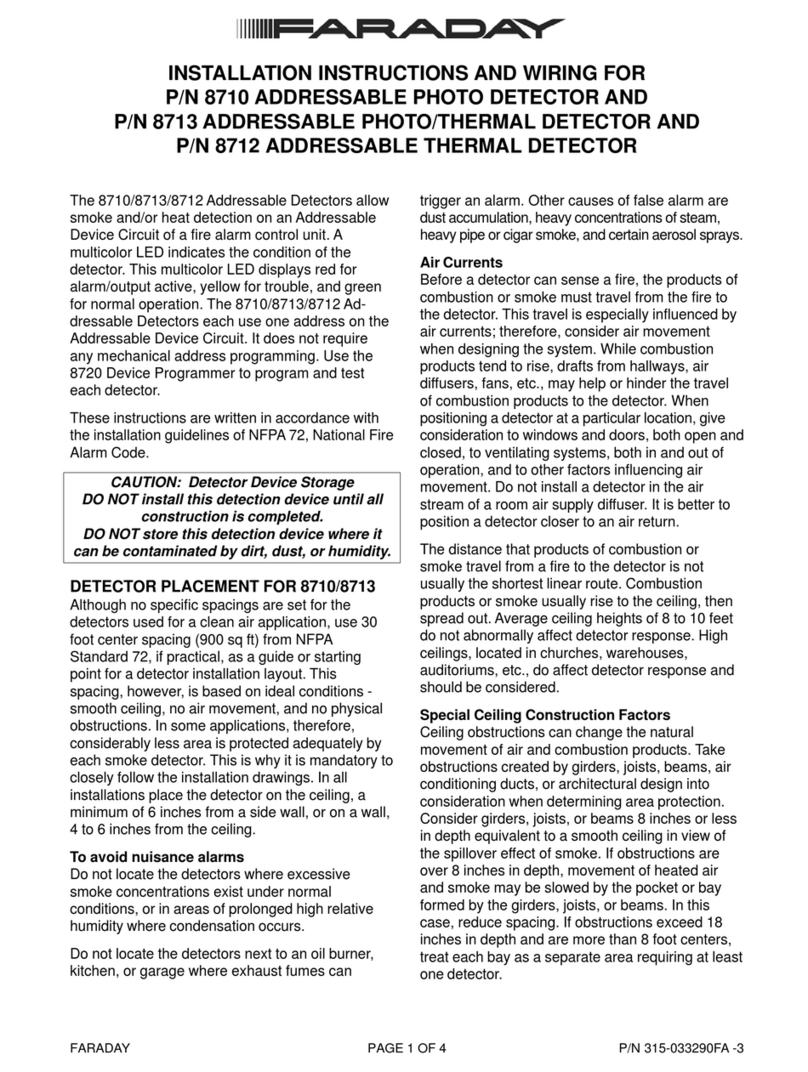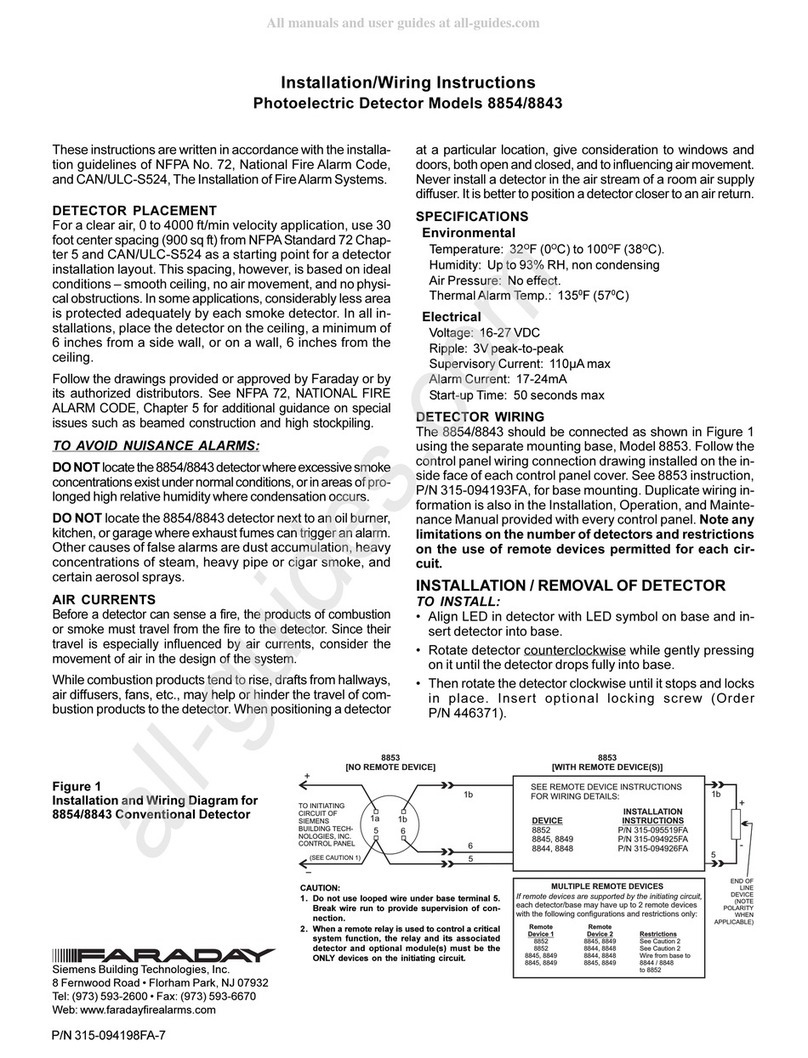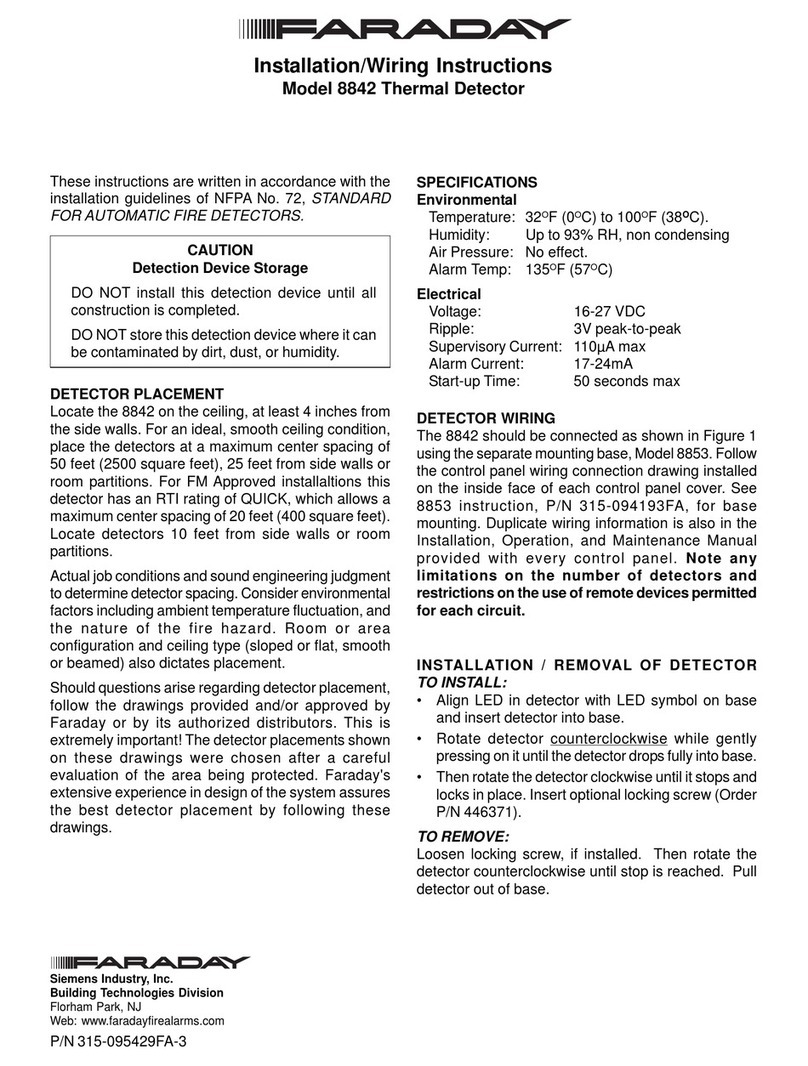
6
Trimming the Inlet Sampling Tube (See Figure 4)
a. Measure the outside width of the duct.
b. Add 2.25 inches to obtain proper length of tube.
Example: Outside width of duct 2 ft 6 in
Add 2.25 inches + 2.25 in
Length of sampling tube 2 ft 8.25 in
The length (2 ft 8.25 in) determines (Table 2 on page 5)
the model number of the appropriate sampling tube
(8933).
c. Measure the sampling tube, starting from the end with the four mount-
ing holes.
d. Trim tube to the correct length, remove all burrs, and insert a rubber
stopper (Figure 3, Item 9) in the tube.
Installation of the Sampling Tubes
a. Before installing the tubes, cut a 7/8-inch hole in the duct wall that is
directly opposite the inlet sampling chamber hole in the detector hous-
ing. This will allow the inlet tube to protrude through the duct.
b. Attach brackets (10) to the inlet and outlet air sampling tubes with 3/16
screws (11).
NOTE: When attaching brackets, be sure to align tubes properly
(See Figure 4).
c. Install the inlet tube (3) by inserting it through the air sampling chamber
as shown in Figure 3. Face sampling tube holes into the air stream
(Figure 4), and secure to the housing with 8/32 screws (12).
d. Install the outlet tube (4) by inserting it into the upper socket of the air
sampling chamber with the scarfed end facing downstream (See Figure
4). Secure the bracket to the housing with an 8/32 screw.
e. Make sure no sampling holes extend beyond the ductway, that the stop-
per (9) remains firmly in position, and that the duct hole is sealed around
the protruding sampling tube.
Air Duct Sampling Tube Pressure Measurement
The Faraday Pressure Differential Measuring device, Model 8883, should
be used to ensure that the sampling tube pressure differential is within the
specified limits (See TECHNICAL DATA). Qualified personnel should take
measurements in accordance with the 8883 Instructions, P/N 315-
085535FA.
ELECTRICAL WIRING
The 8840/8839 should be connected as shown in Figures 5 and 6. Follow
the control panel wiring connection drawing installed on the inside face of
each control panel cover. Duplicate wiring information is also in the Instal-































